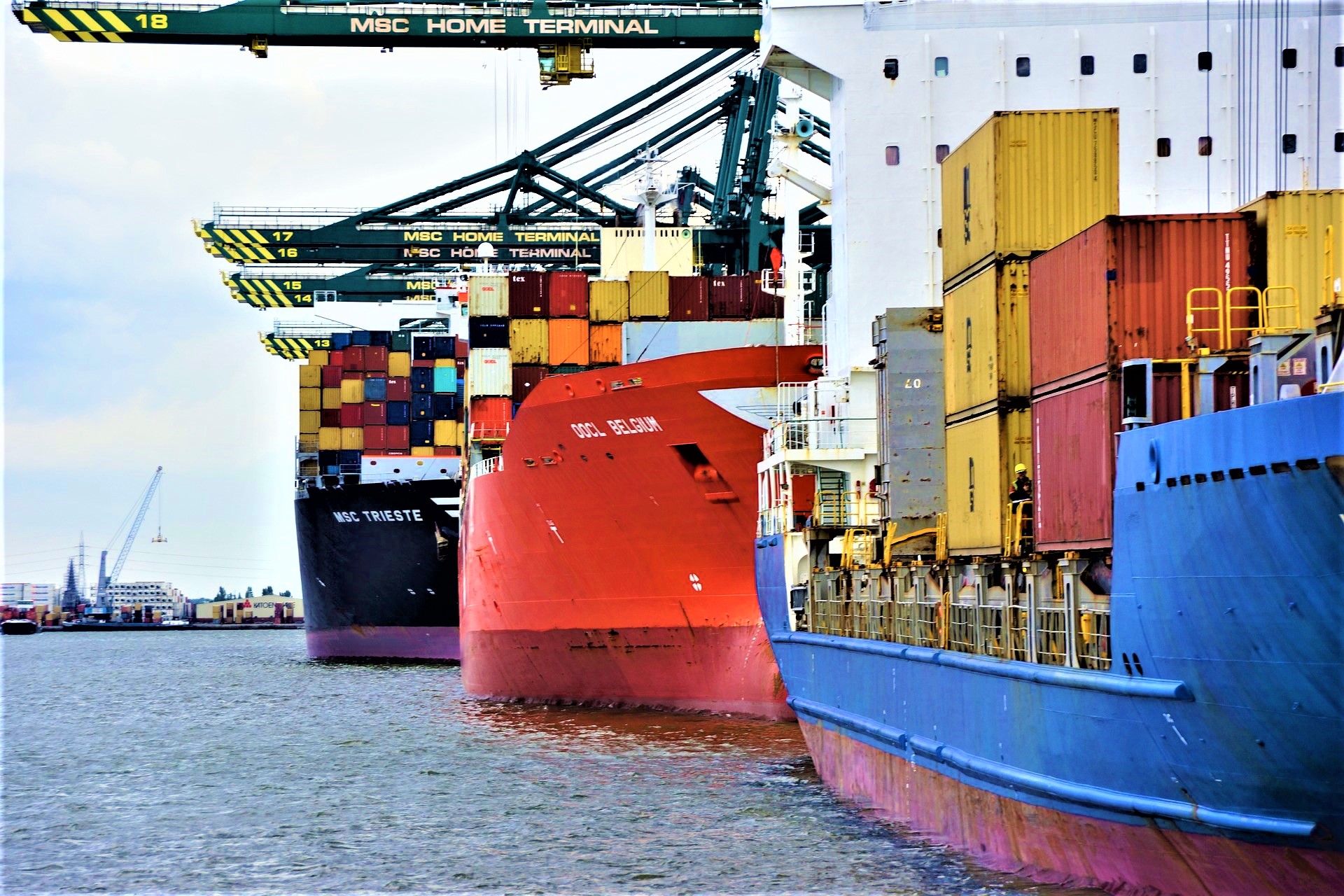
The Potential Impact of a U.S. Government Shutdown on European Trade Businesses
As the U.S. government teeters on the edge of a potential shutdown, the ramifications are not limited to American soil. European trade businesses should take heed of the potential disruptions that could reverberate across the Atlantic. With sources indicating a looming government shutdown as of October 1, 2023, it’s crucial for European enterprises engaged in transatlantic trade to prepare for the uncertainties that may lie ahead.
Introduction to Uncertainty
As the calendar inches closer to September 29, 2023, a palpable sense of uncertainty blankets the United States, emanating from the corridors of the U.S. Congress. The critical task of finalizing a spending agreement, crucial to the functioning of the government, remains frustratingly elusive. This deadlock has set off alarm bells within the international business community, especially those deeply intertwined in the world of global trade. At the stroke of midnight on October 1, 2023, a looming specter comes to life – the possibility of a Federal government shutdown. This impending shutdown casts a foreboding shadow over international trade, conjuring images of agency closures and modifications that threaten to disrupt the very heart of trade-related administrative functions.
Impact on Key Agencies and Trade
October 1st marks the date when key agencies responsible for overseeing trade activities must prepare for partial or full closure. While some essential operations like import processing and investigative functions are expected to persevere, many vital tasks face the grim reality of temporary suspension. Among these critical tasks are the approval of export licenses, classification rulings, and proceedings related to trade remedies.
Department of Homeland Security and Department of Commerce
The Department of Homeland Security attempts to provide reassurance through a contingency plan that ensures the continuity of port entry and cargo security under U.S. Customs and Border Protection (CBP). However, within CBP, challenges loom large. Functions such as auditing, policy-setting, and training could experience disruptions. While certain activities, like reviewing allegations under the Enforce and Protect Act and handling trade fraud reports, might continue, other critical components within Customs, including the processing of rulings and protests, face the grim prospect of significant delays. Moreover, specialized units like Forced Labor Communications may be impacted, potentially affecting regulatory support for vital acts such as the Uyghur Forced Labor Prevention Act.
Meanwhile, the Department of Commerce, home to the International Trade Administration, presents a complex scenario. While crucial actions like trade policy discussions are set to continue, a cloud of uncertainty hangs over various tasks. The echoes of the 2019 shutdown, which witnessed reduced staffing and resources within the ITA and the Bureau of Industry and Security, still reverberate. Antidumping and Countervailing duty investigations, among other proceedings, might be postponed, leading to potential delays for businesses accessing essential resources like the “ACCESS” database. BIS’s export licensing could face delays, though export enforcement investigations are anticipated to proceed. There’s even a possibility that the SNAP-R platform for export license submissions may experience functionality issues or lengthy processing times.
U.S. International Trade Commission, Department of Treasury, and Department of State
Reflecting on the turbulence of the 2019 shutdown, the U.S. International Trade Commission stands at a crossroads. While their 2022 plan offers hope with some litigation-related tasks set to persist, many other investigative functions, including certain proceedings and the maintenance of the U.S. Harmonized Tariff Schedule, could encounter disruptions.
The Department of Treasury’s newly unveiled contingency strategy charts a course for the continuation of significant regulatory and enforcement actions. However, the Office of Foreign Assets Control might face turbulence in license processing and regulatory guidance. Meanwhile, the U.S. Department of State, with its unwavering national security focus, expects the survival of many of its roles according to its contingency plan. Nevertheless, entities like the Directorate of Defense Trade Controls may encounter substantial cutbacks, particularly in licensing and regulatory functions, although enforcement and criminal probes are expected to remain unaffected.
In this stormy sea of uncertainty, businesses must maintain a vigilant watch over Partner Government Agencies, including stalwarts like the FDA and USDA. Delays within these agencies could exacerbate disruptions, potentially leading to further interruptions in clearance processes, making preparation and contingency planning paramount.
The Broader Economic Impact
One of the primary concerns for European trade businesses is the broader economic impact of a U.S. government shutdown. Such shutdowns historically lead to economic uncertainty, potentially dampening both domestic and international demand [3]. European exporters and importers may experience fluctuations in demand for their products and services, affecting revenue and profitability.
The repercussions of a U.S. government shutdown reverberate well beyond American borders, with profound effects on European trade businesses. A paramount concern is the extensive and far-reaching economic impact that these shutdowns historically generate. At the core of this concern is the pervasive uncertainty that engulfs the global economy when the U.S. government ceases operations. This uncertainty has the potential to trigger a chain reaction of economic consequences, impacting both domestic and international demand.
European trade businesses, which thrive on the stability of their export markets, find themselves particularly vulnerable to the fluctuations in demand brought about by a U.S. government shutdown. These businesses rely on consistent and predictable market conditions to plan their production, allocate resources, and meet their customers’ needs. However, when economic uncertainty takes hold in the United States due to a government shutdown, it creates a ripple effect that can disrupt the steady flow of goods and services.
The most immediate impact is often felt through a downturn in demand from the U.S. market. Consumers and businesses in the United States, uncertain about their economic prospects, tend to tighten their belts. This reduction in consumption and investment can lead to reduced demand for European products and services, affecting revenue and profitability. European exporters, who have invested time and resources in establishing themselves in the U.S. market, may suddenly find their sales declining, which can have cascading effects on their supply chains, workforce, and financial stability.
In essence, the economic repercussions of a U.S. government shutdown are not confined to American soil but have a far-reaching impact on European trade businesses, emphasizing the interconnectedness of the global economy and the need for resilience and adaptability in the face of unforeseen disruptions.
Delays in Import and Export Processes
A U.S. government shutdown has significant ramifications on international trade, particularly affecting European companies engaged in trade with the United States. One critical aspect is the disruption it causes in import and export processes, with far-reaching consequences [6].
- Reduced Government Staff: During a government shutdown, there is typically a reduction in government staff at ports and customs. This reduction means that fewer personnel are available to handle the administrative and regulatory tasks associated with importing and exporting goods. As a result, European businesses may encounter delays at various stages of the trade process.
- Delays in Shipment: European companies exporting products to the U.S. and importing goods from American shores may experience delays in the shipment of their products. These delays can occur due to the limited capacity of customs and port authorities to process shipments efficiently. The slowdown in these critical processes can extend the time it takes for goods to reach their destination, disrupting established delivery schedules.
- Supply Chain Disruptions: The delays caused by a government shutdown can have cascading effects on supply chains. Supply chains are carefully coordinated networks that rely on precise timing to function efficiently. Delays at ports and customs can create bottlenecks in the movement of goods, affecting the flow of materials and products throughout the supply chain. This disruption can lead to inefficiencies, increased lead times, and a higher risk of stockouts.
- Additional Costs and Operational Challenges: European businesses may incur additional costs as a result of these delays. These costs can include storage fees, expedited shipping expenses, and penalties for missed delivery deadlines. Such unexpected costs can strain the budgets of businesses engaged in international trade. Moreover, operational challenges arise as companies must adapt to the changing trade landscape, potentially diverting resources from other critical areas.
- Impact on Customer Demands and Contracts: The ability of European businesses to meet customer demands and fulfill contractual obligations is at risk. Delays in shipments can result in disappointed customers who expect timely deliveries. This can harm relationships and reputations. Furthermore, contractual obligations, including penalties for late deliveries, may be triggered, leading to financial consequences.
Potential Halt in Export License Approvals
Exporting goods to the U.S. often involves navigating a complex web of licenses and approvals. During a government shutdown, there is a real risk of a potential halt in export license approvals. European companies that rely on these approvals to conduct their business operations with the U.S. may find themselves in a precarious situation. The inability to secure necessary export licenses can disrupt ongoing trade agreements, delay shipments, and even lead to contractual breaches. This regulatory uncertainty can leave European businesses in a state of limbo, unsure of their ability to continue their trade activities with the U.S. market, which can have lasting repercussions on their bottom line and long-term business relationships [2].
- Complex Licensing Process: Exporting goods to the U.S. often requires European companies to obtain various licenses and approvals. This process is already intricate due to regulatory requirements, and any disruption in this area can lead to complications.
- Risk of Halt in Approvals: A government shutdown creates uncertainty and staffing shortages within government agencies responsible for processing export license applications. This situation can result in a real risk of a halt in the approval of these licenses. European companies relying on these approvals for their business operations with the U.S. may face a precarious situation.
- Disruption of Ongoing Agreements: European businesses often have ongoing trade agreements and contracts with American counterparts. The inability to secure necessary export licenses can disrupt these agreements. Delays in shipments caused by the lack of approvals can breach contractual obligations, leading to legal and financial consequences.
- Operational Delays: The delay in export license approvals can cause operational delays for European companies. Goods may be stuck in transit or held at customs due to regulatory uncertainty. This not only affects the timely delivery of products but also incurs additional storage and handling costs.
- Long-term Repercussions: The regulatory uncertainty during a government shutdown can leave European businesses in a state of limbo. They may be unsure of their ability to continue their trade activities with the U.S. market. Such uncertainty can erode trust and damage long-term business relationships.
- Bottom-Line Impact: The overall impact on European companies’ bottom lines can be substantial. Costs associated with delays, potential contractual breaches, and lost opportunities can result in financial losses that may take time to recover from.

Navigating Uncertainty
In the face of uncertainty caused by potential U.S. government shutdowns and their impact on international trade, European trade businesses must adopt strategic measures to mitigate risks and maintain operational resilience. European trade businesses can potentially better navigate uncertainty and safeguard their operations, supply chains, and long-term competitiveness by considering the following:
- Assess Supply Chain Vulnerabilities: European businesses should conduct a comprehensive assessment of their supply chains. This involves identifying vulnerabilities, potential bottlenecks, and dependencies on specific suppliers or regions. Diversifying sources of goods and raw materials can reduce the risk of disruptions during a U.S. government shutdown.
- Monitor Regulatory Changes: Staying informed about regulatory changes in the U.S. is crucial. European trade businesses must closely monitor alterations in trade policies, export-import regulations, and compliance requirements. This awareness allows them to adapt quickly to changing conditions and ensure compliance with U.S. trade laws.
- Prepare for Delays: Recognizing the potential for delays in shipments and approvals is essential. European companies should develop contingency plans to address these delays efficiently. This might involve having alternative transportation routes, warehousing options, or additional inventory to cover potential disruptions.
- Diversify Markets: Reducing dependence on the U.S. market is a prudent strategy. European businesses can explore diversification by targeting new markets and customer segments. Expanding into other regions or countries can help mitigate the impact of any downturn in U.S. demand during government shutdowns.
- Stay Updated and Agile: Continuously monitoring the situation is vital. European trade businesses should maintain a proactive stance by keeping abreast of developments related to U.S. government operations, budget negotiations, and trade policies. Being agile and ready to adapt their strategies as circumstances evolve is essential for resilience.
Supply Chain Disruptions and SMEs in Manufacturing
Supply chain disruptions can have a profound impact on SMEs in the manufacturing sector. For example, if a critical component or raw material is delayed due to supply chain disruptions, it can lead to production delays and increased costs. SMEs may struggle to meet customer demand and face the risk of losing contracts.
- Production Delays: When essential components or raw materials face delays due to supply chain disruptions, SMEs in manufacturing may experience production delays. This can lead to missed delivery deadlines and contract breaches.
- Increased Costs: To overcome delays, SMEs may need to expedite shipments or source materials from alternative suppliers, leading to higher procurement costs.
- Customer Demand Challenges: SMEs may struggle to meet customer demand, potentially resulting in customer dissatisfaction and lost future business opportunities.
Example: Consider a small European auto parts manufacturer that operates on a just-in-time inventory system. If supply chain disruptions cause delays in receiving critical components, the production line may halt. This can result in lost revenue, contract cancellations, and damage to the manufacturer’s reputation.
Supply Chain Disruptions and SMEs in Trade
Small businesses engaged in international trade are highly susceptible to supply chain disruptions. Delays in shipments, customs clearance issues, and fluctuating demand can disrupt trade operations and impact profitability.
- Shipping Delays: Disruptions can lead to shipping delays, affecting the timely arrival of goods and potentially causing financial losses.
- Customs Clearance Issues: Increased scrutiny or delays in customs clearance can hold up shipments, impacting trade operations and contractual obligations.
- Fluctuating Demand: Unpredictable disruptions can lead to fluctuating demand for goods, making it challenging for SMEs to manage inventory levels.
Example: Imagine a European clothing retailer that imports garments from Asia. If supply chain disruptions cause port congestion and shipping delays, the retailer may struggle to stock its stores with new arrivals, resulting in a drop in sales and unsold inventory.
Supply Chain Disruptions and SMEs in Transportation
SMEs in the transportation sector, such as logistics companies and carriers, are directly affected by supply chain disruptions. These disruptions can result in route changes, increased fuel costs, and delays in cargo deliveries.
- Route Changes: Disruptions can necessitate route changes, potentially increasing travel distances and costs.
- Increased Fuel Costs: If supply chain disruptions affect the oil industry, SMEs in transportation may experience fuel shortages and higher fuel prices, impacting profit margins.
- Cargo Delivery Delays: Delays in cargo deliveries can lead to contractual breaches and penalties.
Example: Consider a small European logistics company that relies on a stable fuel supply. If supply chain disruptions in the oil industry lead to fuel shortages, the company may need to purchase fuel at higher prices, affecting its profitability and competitiveness.
Supply Chain Resilience for SMEs
Supply chain disruptions can significantly impact the operations of small and medium-sized enterprises (SMEs). To enhance resilience and minimize the adverse effects of such disruptions, SMEs can implement a range of strategies:
- Diversify Suppliers:
- SMEs should collaborate with multiple suppliers to reduce dependency on a single source. This diversification not only safeguards against potential disruptions from one supplier but also provides options to negotiate better terms and prices.
- Example: A small European electronics manufacturer should consider sourcing critical components from multiple suppliers, both local and international, to reduce vulnerability to regional disruptions.
- Safety Stock:
- Maintaining safety stock involves storing extra inventory beyond regular demand to serve as a buffer during supply chain disruptions. This ensures that SMEs can continue production even when faced with unexpected delays.
- Example: A European food distributor may keep surplus perishable goods to address delivery interruptions caused by unforeseen circumstances like transportation delays or natural disasters.
- Digitalization:
- Implementing supply chain management software offers real-time visibility into the entire supply chain. This digitalization enables SMEs to monitor inventory levels, track shipments, and respond swiftly to disruptions.
- Example: A small European clothing retailer can adopt inventory management software to monitor stock levels and reorder products as they reach predefined thresholds, reducing the risk of stockouts.
- Collaboration:
- Collaboration with supply chain partners, including suppliers, distributors, and logistics providers, enhances information sharing and resource allocation during disruptions. Open communication can lead to quicker problem-solving.
- Example: A European automotive parts manufacturer can collaborate closely with logistics partners to reroute shipments in case of transportation bottlenecks due to unforeseen events.
In addition to these strategies, it’s essential for SMEs to regularly assess and update their supply chain resilience plans to adapt to changing circumstances and emerging risks.

Concluding Remarks
While a U.S. government shutdown may initially appear as a domestic issue, its consequences can reverberate globally and impact European trade businesses. These ramifications include:
- International Trade Disruptions: European companies engaged in trade with the U.S. may experience delays in customs clearance, regulatory approvals, and shipping due to disruptions in U.S. government agencies.
- Economic Uncertainty: A U.S. government shutdown can create economic uncertainty, affecting consumer confidence and global financial markets, potentially reducing demand for European exports.
- Strategic Preparedness: European enterprises should proactively prepare for the possibility of U.S. government shutdowns by diversifying markets, closely monitoring developments, and having contingency plans in place.
While supply chain disruptions pose significant challenges to SMEs within Europe, proactive measures such as diversifying suppliers and embracing digital solutions can bolster supply chain resilience. Simultaneously, European trade businesses must remain prepared and adaptable to navigate potential global disruptions stemming from events like U.S. government shutdowns.
Supply chain disruptions pose significant challenges to SMEs across various sectors within the European region. These disruptions can result in production delays, revenue loss, and increased costs. However, proactive measures like diversifying suppliers and embracing digital solutions can enhance supply chain resilience and help SMEs navigate these challenges effectively.
Sources:
- CSIS – How a Shutdown Would Hinder Critical Trade Functions
- International Trade Insights – Preparing for Impact of Government Shutdown
- DSV – Impacts to US trade – Possible government shutdown
- Reuters – How would a government shutdown affect US foreign policy?
- CNN – What happens if the government shuts down: An illustrated…
- Real Economy – The looming government shutdown’s potential impact


